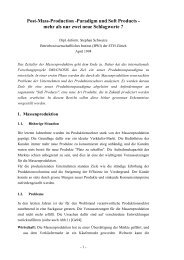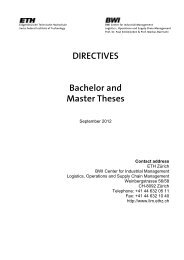The China Venture
The China Venture
The China Venture
You also want an ePaper? Increase the reach of your titles
YUMPU automatically turns print PDFs into web optimized ePapers that Google loves.
democratic centralism, all governmental organs function under the unified leadership of the<br />
central authorities, in line with the delegated powers. <strong>The</strong> following five levels can be<br />
distinguished in the governmental structure of the PRC:<br />
• the central level;<br />
• the provincial level;<br />
• the prefectural level;<br />
• the county and city level;<br />
• the township and village level.<br />
<strong>The</strong> people’s congresses enjoy exclusive state power at each of the above mentioned five<br />
le vels. Directly below the respective congresses, there exist three branches: the governmental<br />
branch, the judicial branch and the procuratorial branch. <strong>The</strong> same pattern of structure can in<br />
principle be observed at each level of the governmental structure.<br />
However, it cannot be overlooked that beside the formal structure of the state organs, the<br />
Communist Party, as the leading and only political party possessing state power, has the<br />
decisive role in making, applying and reforming legal rules. <strong>The</strong>refore, the comprehension<br />
and interpretation of law needs to follow the Party’s policy and instructions.<br />
2.2.3 Legal structure<br />
As stated above, the legal structure closely relates to the governmental structure of the PRC.<br />
<strong>The</strong> National People’s Congress (hereafter the NPC) as the highest state organ has the unitary<br />
legislative power over the entire nation, and it delegates certain legislative powers to people’s<br />
congresses at lower levels and the central and local governments.<br />
On the top of the legal structure is the Constitution, the supreme law in <strong>China</strong>. 6 <strong>The</strong><br />
Constitution in force was enacted in 1982 and was revised respectively in 1988 and 1993,<br />
resulting in 11 amendments. Although the Constitution is the supreme law in <strong>China</strong>, it cannot<br />
be quoted in judicial verdicts and administrative decisions as direct legal ground for solving<br />
concrete disputes and problems. <strong>The</strong>refore, it is out of reach for the daily legal practice and<br />
operation. <strong>The</strong> second level of law are the legal documents promulgated by the NPC,<br />
6 An English translation of the Constitution of the People’s Republic of <strong>China</strong> may be found under:<br />
http://www.qis.net/chinalaw /prccon5.htm.<br />
11






